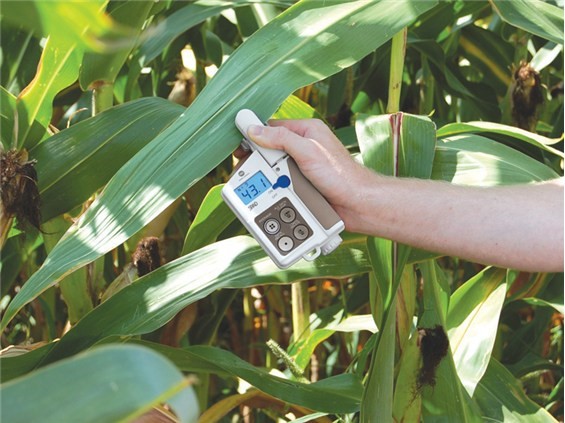All plants require a ready supply of macro and micronutrients within their growth medium in order to accomplish their standard physiological functions. The presence of appropriate concentrations of nitrogen (N), phosphorus (P), potassium (K), calcium (Ca), sulfur (S), magnesium (Mg) and iron (Fe) have all been recognised as essential for optimum plant growth.
Deficiencies in any of these nutrients can manifest (in addition to other characteristics depending on the nutrient in question) as a reduction in leaf chlorophyll content. A depletion in overall leaf chlorophyll content reduces the amount of solar radiation that can be absorbed which in turn limits the efficiency of corresponding photosynthetic processes thus lowering primary photosynthetic production. (Kalaji et al. 2017).
The measurement of chlorophyll content can therefore yield important information relating to the presence of biotic stress factors and also of abiotic issues such as light, drought and pigment inhibiting herbicide damage (all of which are also significant in leaf chlorophyll content).
By employing measurements of chlorophyll content in agricultural applications, producers are able to gain valuable insights into plant growth and yield potential quickly and efficiently allowing targeted, optimised nutrient fertilisation strategies to be developed. The benefits of this approach may include:
- Improved yield through a more photosynthetically efficient crop
- A reduction in fertiliser usage
- Informed herbicide type and delivery method (for both cost and environmental benefits)

Chlorophyll content was traditionally measured in the laboratory by extracting the chlorophyll itself from a leaf sample using acetone before calculating the chlorophyll concentration by spectrophotometrically measuring absorption at 663 nm and 645 nm. This process is time consuming, destructive to the plant material and above all, impractical in applied situations.
The other option is to use a hand-held device such as the Konica Minolta SPAD-502 Chlorophyll Meter. The SPAD 502 Plus quantifies subtle changes or trends in plant health long before they’re visible to the human eye. Non-invasive measurement; simply clamp the meter over leafy tissue, and receive an indexed chlorophyll content reading (-9.9 to 199.9) in less than 2 seconds. Assess nitrogen needs by comparing in-field SPAD readings to university guidelines or to adequately fertilized reference strips. Research shows a strong correlation between SPAD measurements and leaf N content.